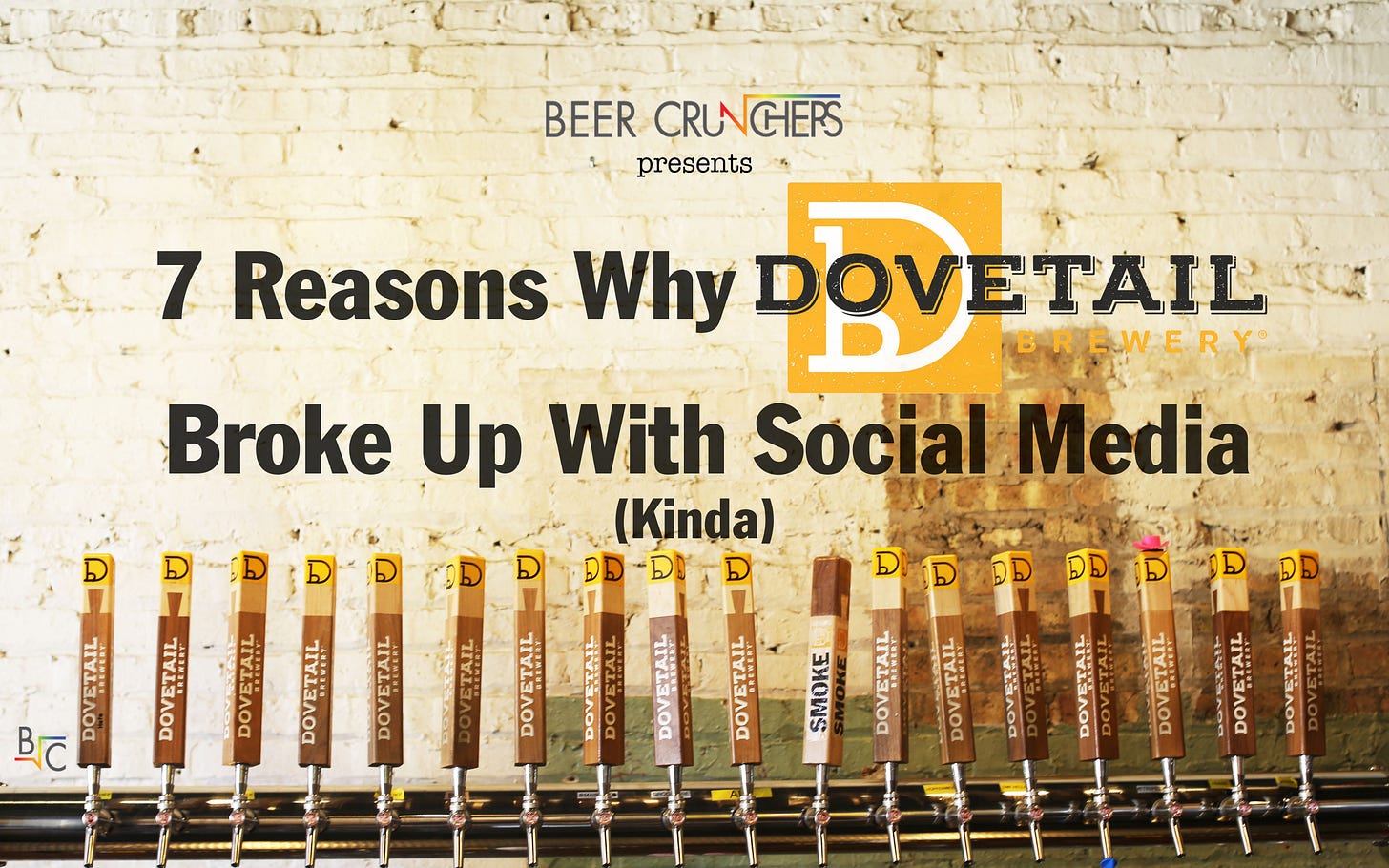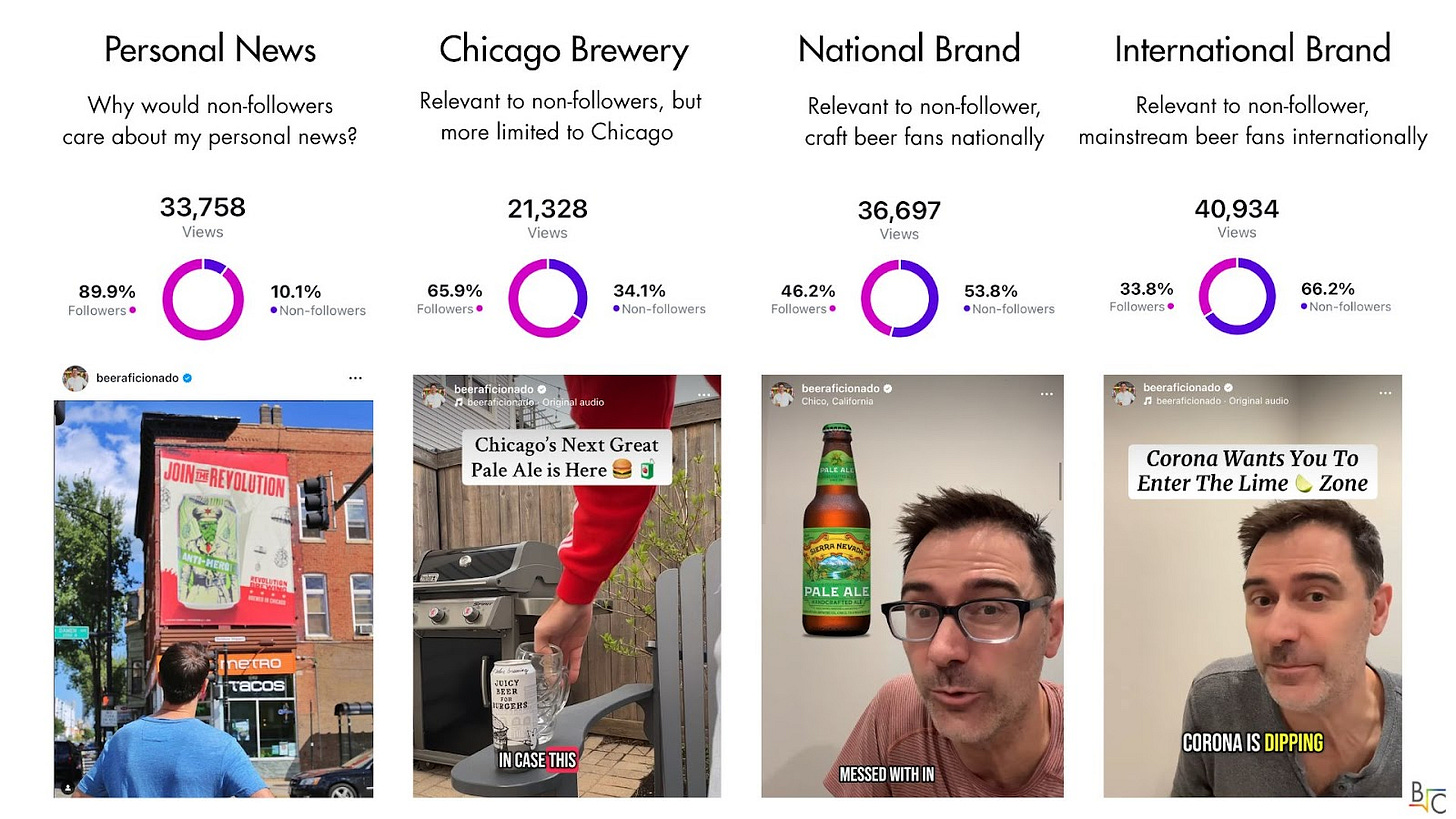Go Deep or Go Wide?
It’s a question every emerging beer and beverage brand faces—whether they’re choosing which markets to enter, where to focus their energy, or even how to shape their communications strategy. It’s tempting to say “both,” but realistically, few have the resources to focus on both the quality and quantity game.
Dovetail Brewing caught my attention recently when they announced they’re breaking up with social media (kinda) to focus on their newsletter. As someone invested in both social and long form, I was intrigued having felt the joy and pain points of both. , aka JP—who bridges the worlds of brewing and marketing at the beloved Chicago brewery —generously shared seven thoughtful reasons behind their decision to break free from the algorithmic grind.
Part of me wasn’t surprised at Dovetail’s willingness to scale back their use of these mediums, given their company culture that leans heavily into tradition and a conviction toward staying the course. Another part of me was surprised though, simply due to the fact that their creativity and curation on Instagram is at the very top of Chicago breweries who use the platform. Here’s what JP had to say, and my reactions:
1. Better Audience Control
Social media algorithms dictate who sees your content, often limiting reach unless you pay for ads. In August of last year, Instagram introduced "Views" as their primary metric. Dovetail has 20,000 followers on Instagram. On average, I noticed that Dovetail social media posts only garnered ~2,000 views. So, less than 10% of our Instagram audience sees a post (and I emphasize, that metric is just someone who sees a post in their feed. How many posts do you actually see when you are scrolling?) Newsletters go directly to subscribers, ensuring the message is, at least, received. Algorithm fatigue was a big reason I decided we needed to refocus.
"But what about discovery?"
If you look at the Views metric, it's broken down into Follower and Non-Followers, and the NF numbers are often less than 10% of the views of a particular post. So, 200 people out of potential millions end up seeing the post. And it's just a view. That's not a conversion into a follower or an engagement with a post. Of course, if you have the resources to pony up the money, or play the algorithm game, this changes.
When it comes to discovery, I go back to the wide vs. deep methodology and its relationship with how the algorithms work when trying to pinpoint the extent to which a social media post may be seen by non-followers.
Dovetail likes to go deep with their audience, which I love. That strategy performs best with your existing audience who knows you well, and is already at a certain level of knowledge. This allows the subject matter to jump to more intermediate or advanced topics without having to start from the beginning. Translated into social though, deeper cuts face limited potential with respect to “discovery” as the algorithm tests the content outside your audience.
Here’s 4 examples of recent Instagram posts of mine, with very different Followers Vs. Non-Follower splits on views, and my simple theory as to why for each:
Going wide, which is often my approach, starts your viewers at the beginning each time with more standalone topics. As a result, each piece of content is more approachable to the masses, and other than a potentially bad pun at the end, viewers don’t need to know anything about me to get value out of the content.
This approach gets new eyeballs beyond the introduction, and if well-received, spreads the content to new, high potential audiences. That’s harder to do and counterproductive to a business looking to tell a long continuous story that’s always adding new chapters, making newsletters a much better fit.
Keep reading with a 7-day free trial
Subscribe to Beer Crunchers to keep reading this post and get 7 days of free access to the full post archives.






